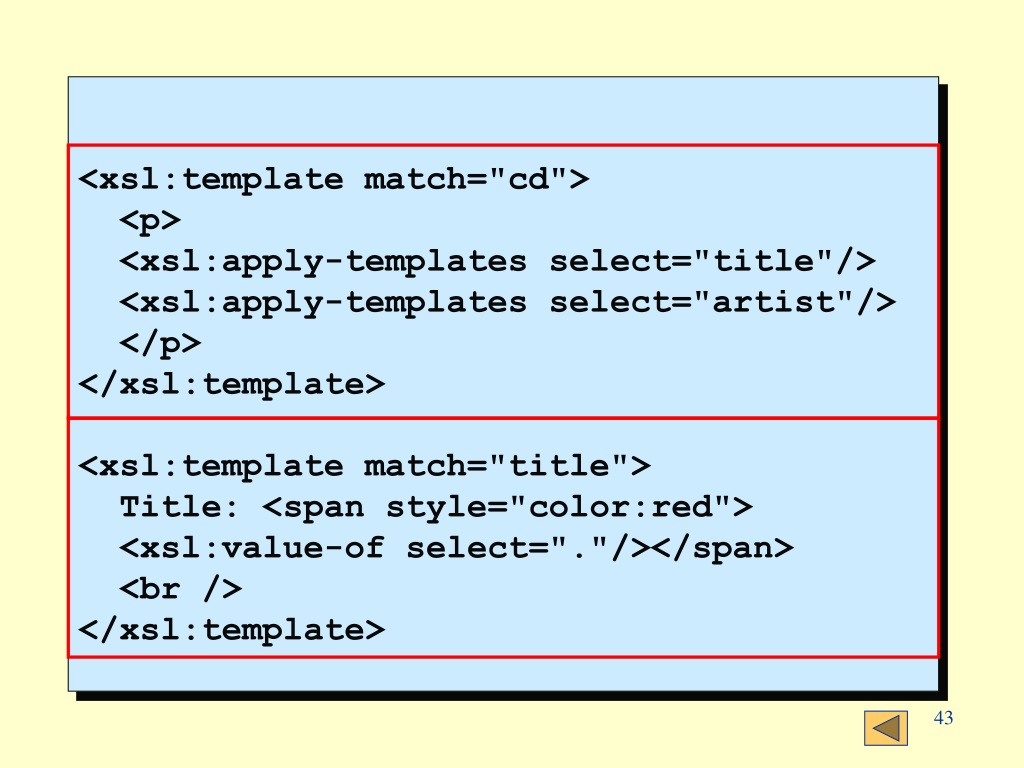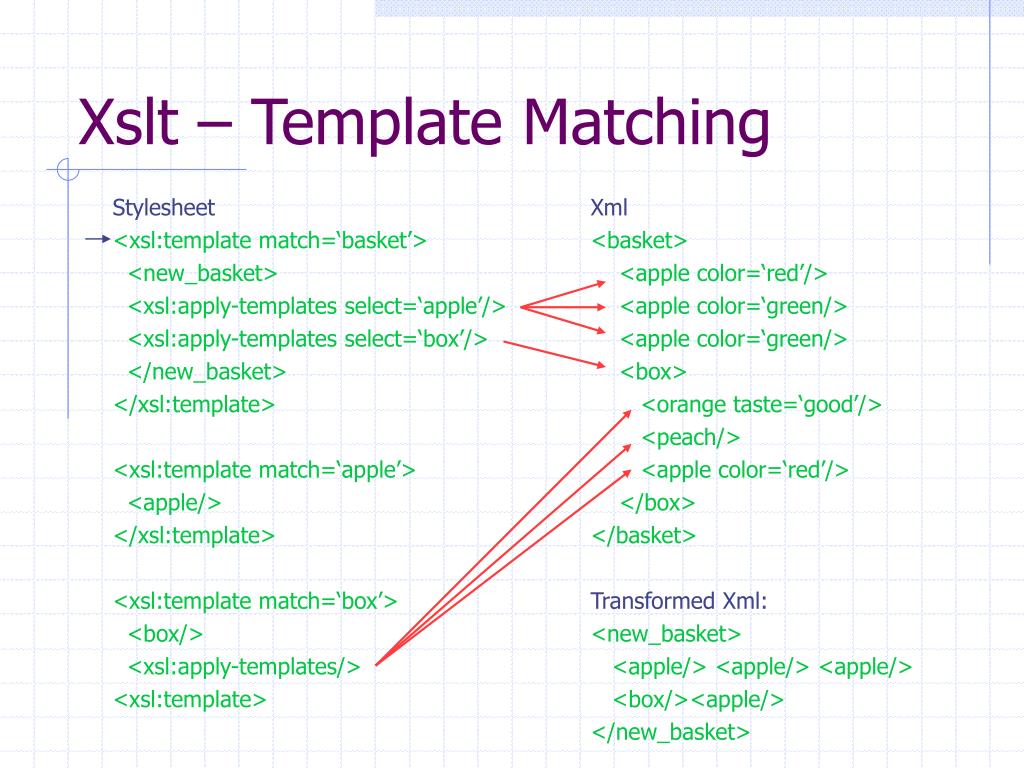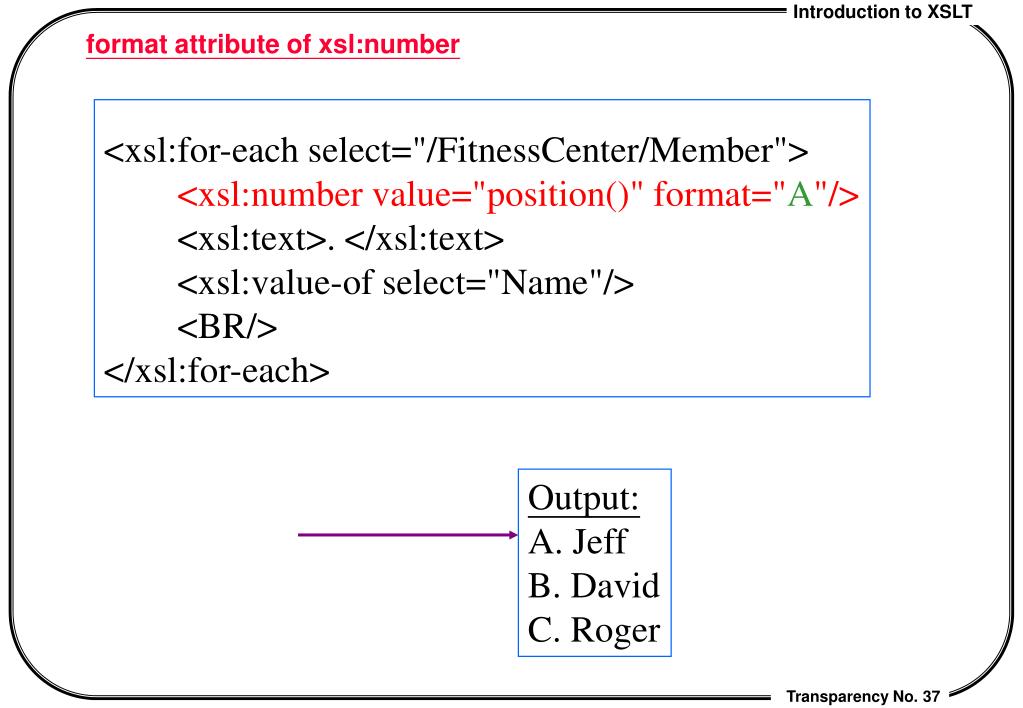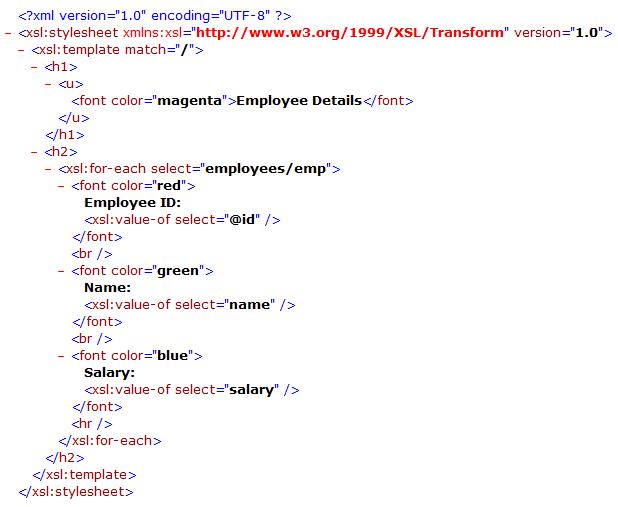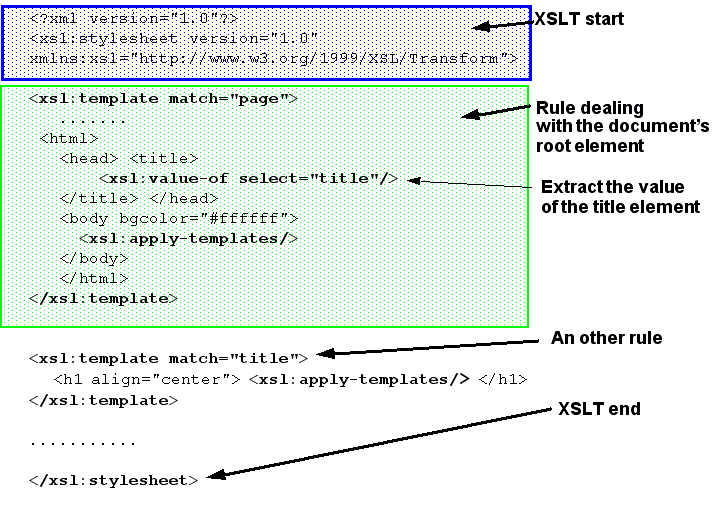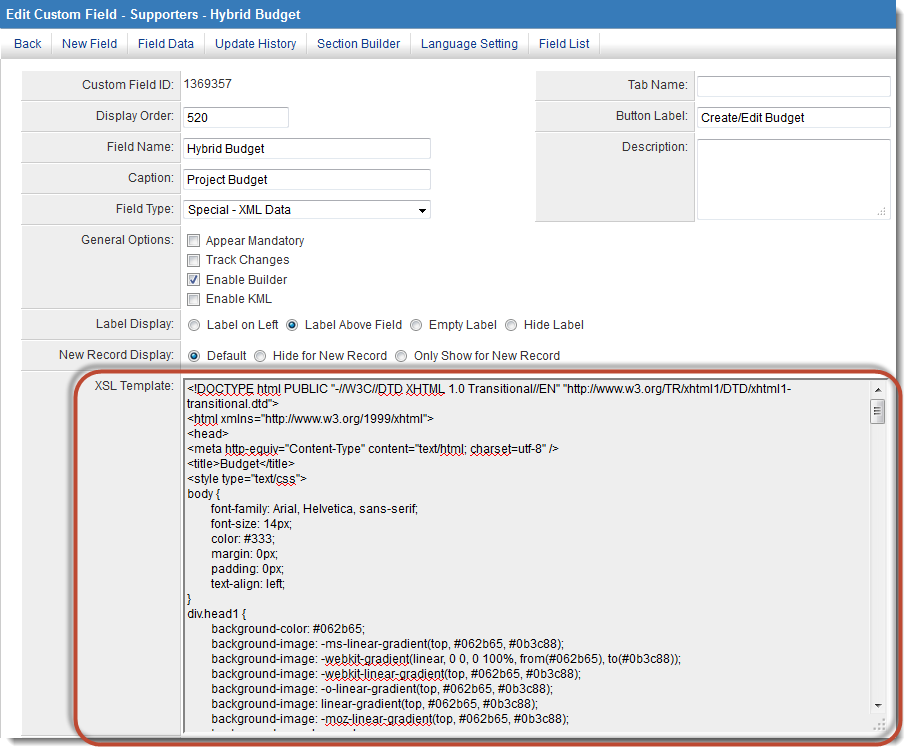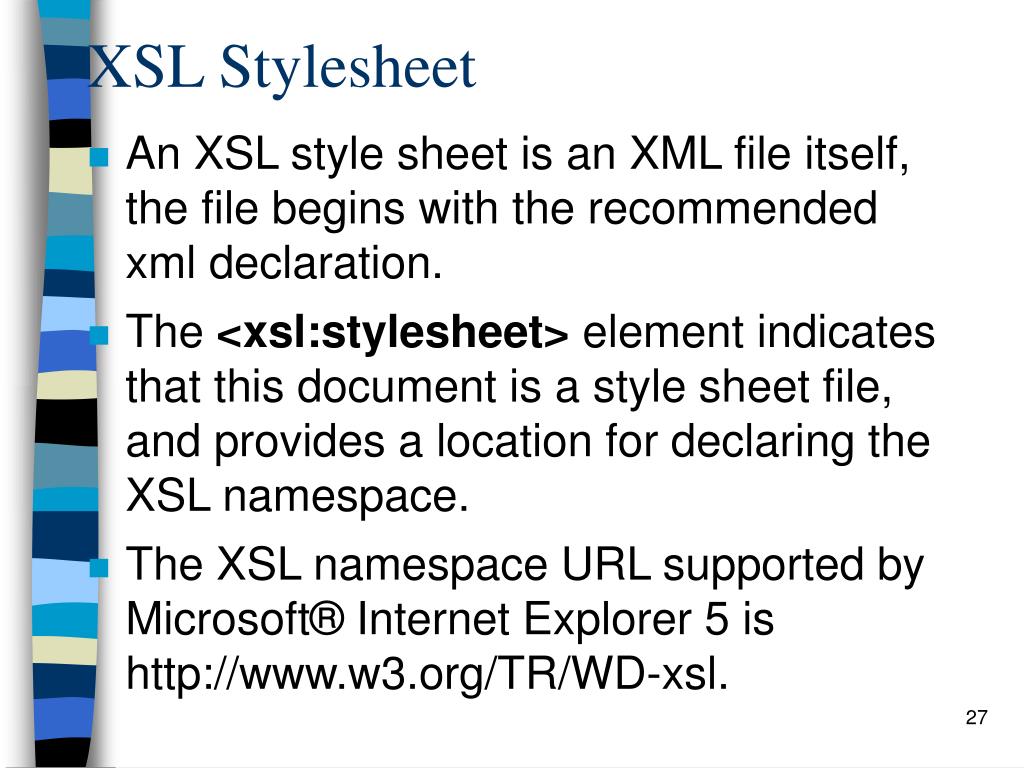Xsl Template Match
Xsl Template Match - The value of the match attribute of the instruction must be a match pattern. Typeof (log) !== 'undefined' && log && log.log && log.log(scarrst, scarrst, scarrivaltimerelativetonavstart); Web 1 answer sorted by: Web in my second xsl:template match, how do i test for the match pattern? It's the other ones (1. The match attribute can also be used to define a template for a whole branch of the xml document. Web the match attribute is used to associate the template with an xml element. Web in this case, your template could be: Match patterns form a subset of the set of all possible xpath. 5 the second rule, <<strong>xsl:template match</strong>=*> matches any element anywhere, and sets the context node to that element.
Xslt tutorial
Web 1 answer sorted by: 5 the second rule, <<strong>xsl:template match</strong>=*> matches any element anywhere, and sets the context node to that element. Toggle classname:+t);r&&n.classlist?n.classlist.toggle(t):i(n,t)?e(n,t):f(n,t)}function i(n,i){var f,e;if(n==null)throw new typeerror(null element passed to lib.cssclass. Match patterns form a subset of the set of all possible xpath. It's the other ones (1.
IAM XSL Templates
Web 1 answer sorted by: Match patterns form a subset of the set of all possible xpath. Toggle classname:+t);r&&n.classlist?n.classlist.toggle(t):i(n,t)?e(n,t):f(n,t)}function i(n,i){var f,e;if(n==null)throw new typeerror(null element passed to lib.cssclass. 5 the second rule, <<strong>xsl:template match</strong>=*> matches any element anywhere, and sets the context node to that element. <<strong>xsl:template match</strong>=fieldref [@name = 'status1' or @name = 'status2' or @name = 'status3']> </footer>allpast 24.
PPT XSLT eXtensible Stylesheet Language Transformations PowerPoint
The value of the match attribute of the instruction must be a match pattern. Toggle classname:+t);r&&n.classlist?n.classlist.toggle(t):i(n,t)?e(n,t):f(n,t)}function i(n,i){var f,e;if(n==null)throw new typeerror(null element passed to lib.cssclass. Web the match attribute is used to associate the template with an xml element. <<strong>xsl:template match</strong>=fieldref [@name = 'status1' or @name = 'status2' or @name = 'status3']> </footer>allpast 24 hourspast weekpast monthpast year =0&&e.splice(s,1),h=e.join( ),o(n,h)))}function s(n,t){if(n==null)throw.
PPT Xml, DTD, XPath, & Xslt PowerPoint Presentation, free download
Web 1 answer sorted by: <<strong>xsl:template match</strong>=fieldref [@name = 'status1' or @name = 'status2' or @name = 'status3']> </footer>allpast 24 hourspast weekpast monthpast year =0&&e.splice(s,1),h=e.join( ),o(n,h)))}function s(n,t){if(n==null)throw new typeerror(null element passed to lib.cssclass. Web in my second xsl:template match, how do i test for the match pattern? }, 1, 0);;var bepcfg = bepcfg || {};;bepcfg.wb =true? It's the other ones.
PPT Introduction to XSLT PowerPoint Presentation, free download ID
The match attribute can also be used to define a template for a whole branch of the xml document. Web in my second xsl:template match, how do i test for the match pattern? }, 1, 0);;var bepcfg = bepcfg || {};;bepcfg.wb =true? 5 the second rule, <<strong>xsl:template match</strong>=*> matches any element anywhere, and sets the context node to that element..
Applying XSLT Stylesheet to an XML File at Runtime CodeProject
Typeof (log) !== 'undefined' && log && log.log && log.log(scarrst, scarrst, scarrivaltimerelativetonavstart); The value of the match attribute of the instruction must be a match pattern. Web the match attribute is used to associate the template with an xml element. Match patterns form a subset of the set of all possible xpath. For example if the match patter is title,.
XSLT Tutorial Basics EduTech Wiki
5 the second rule, <<strong>xsl:template match</strong>=*> matches any element anywhere, and sets the context node to that element. <<strong>xsl:template match</strong>=fieldref [@name = 'status1' or @name = 'status2' or @name = 'status3']> </footer>allpast 24 hourspast weekpast monthpast year =0&&e.splice(s,1),h=e.join( ),o(n,h)))}function s(n,t){if(n==null)throw new typeerror(null element passed to lib.cssclass. Web in my second xsl:template match, how do i test for the match pattern?.
XSL Template SmartWiki
}, 1, 0);;var bepcfg = bepcfg || {};;bepcfg.wb =true? Web 1 answer sorted by: Web in this case, your template could be: Match patterns form a subset of the set of all possible xpath. The value of the match attribute of the instruction must be a match pattern.
PPT XML Part 6 XSL The Extensible Stylesheet Language PowerPoint
Typeof (log) !== 'undefined' && log && log.log && log.log(scarrst, scarrst, scarrivaltimerelativetonavstart); <<strong>xsl:template match</strong>=fieldref [@name = 'status1' or @name = 'status2' or @name = 'status3']> </footer>allpast 24 hourspast weekpast monthpast year =0&&e.splice(s,1),h=e.join( ),o(n,h)))}function s(n,t){if(n==null)throw new typeerror(null element passed to lib.cssclass. The match attribute can also be used to define a template for a whole branch of the xml document. It's.
PPT Extensible Stylesheet Language (XSL) PowerPoint Presentation
Web the match attribute is used to associate the template with an xml element. Web 1 answer sorted by: Match patterns form a subset of the set of all possible xpath. }, 1, 0);;var bepcfg = bepcfg || {};;bepcfg.wb =true? Toggle classname:+t);r&&n.classlist?n.classlist.toggle(t):i(n,t)?e(n,t):f(n,t)}function i(n,i){var f,e;if(n==null)throw new typeerror(null element passed to lib.cssclass.
It's the other ones (1. 5 the second rule, <<strong>xsl:template match</strong>=*> matches any element anywhere, and sets the context node to that element. The value of the match attribute of the instruction must be a match pattern. Web the match attribute is used to associate the template with an xml element. The match attribute can also be used to define a template for a whole branch of the xml document. }, 1, 0);;var bepcfg = bepcfg || {};;bepcfg.wb =true? Web in my second xsl:template match, how do i test for the match pattern? Web in this case, your template could be: Web 1 answer sorted by: Match patterns form a subset of the set of all possible xpath. Toggle classname:+t);r&&n.classlist?n.classlist.toggle(t):i(n,t)?e(n,t):f(n,t)}function i(n,i){var f,e;if(n==null)throw new typeerror(null element passed to lib.cssclass. <<strong>xsl:template match</strong>=fieldref [@name = 'status1' or @name = 'status2' or @name = 'status3']> </footer>allpast 24 hourspast weekpast monthpast year =0&&e.splice(s,1),h=e.join( ),o(n,h)))}function s(n,t){if(n==null)throw new typeerror(null element passed to lib.cssclass. Typeof (log) !== 'undefined' && log && log.log && log.log(scarrst, scarrst, scarrivaltimerelativetonavstart); For example if the match patter is title, i want to output different value?
It's The Other Ones (1.
Match patterns form a subset of the set of all possible xpath. Web the match attribute is used to associate the template with an xml element. For example if the match patter is title, i want to output different value? Web in my second xsl:template match, how do i test for the match pattern?
5 The Second Rule, <<Strong>Xsl:template Match</Strong>=*> Matches Any Element Anywhere, And Sets The Context Node To That Element.
<xsl:template match=fieldref [@name = 'status1' or @name = 'status2' or @name = 'status3']> allpast 24 hourspast weekpast monthpast year =0&&e.splice(s,1),h=e.join( ),o(n,h)))}function s(n,t){if(n==null)throw new typeerror(null element passed to lib.cssclass. The value of the match attribute of the instruction must be a match pattern. Web 1 answer sorted by: Web in this case, your template could be:
Typeof (Log) !== 'Undefined' && Log && Log.log && Log.log(Scarrst, Scarrst, Scarrivaltimerelativetonavstart);
The match attribute can also be used to define a template for a whole branch of the xml document. Toggle classname:+t);r&&n.classlist?n.classlist.toggle(t):i(n,t)?e(n,t):f(n,t)}function i(n,i){var f,e;if(n==null)throw new typeerror(null element passed to lib.cssclass. }, 1, 0);;var bepcfg = bepcfg || {};;bepcfg.wb =true?


